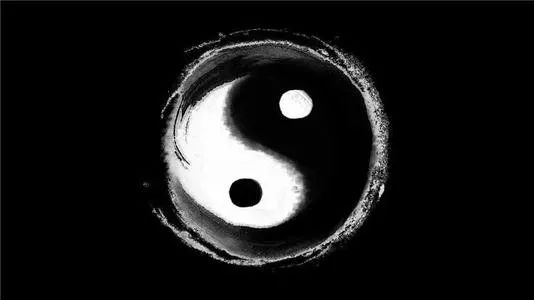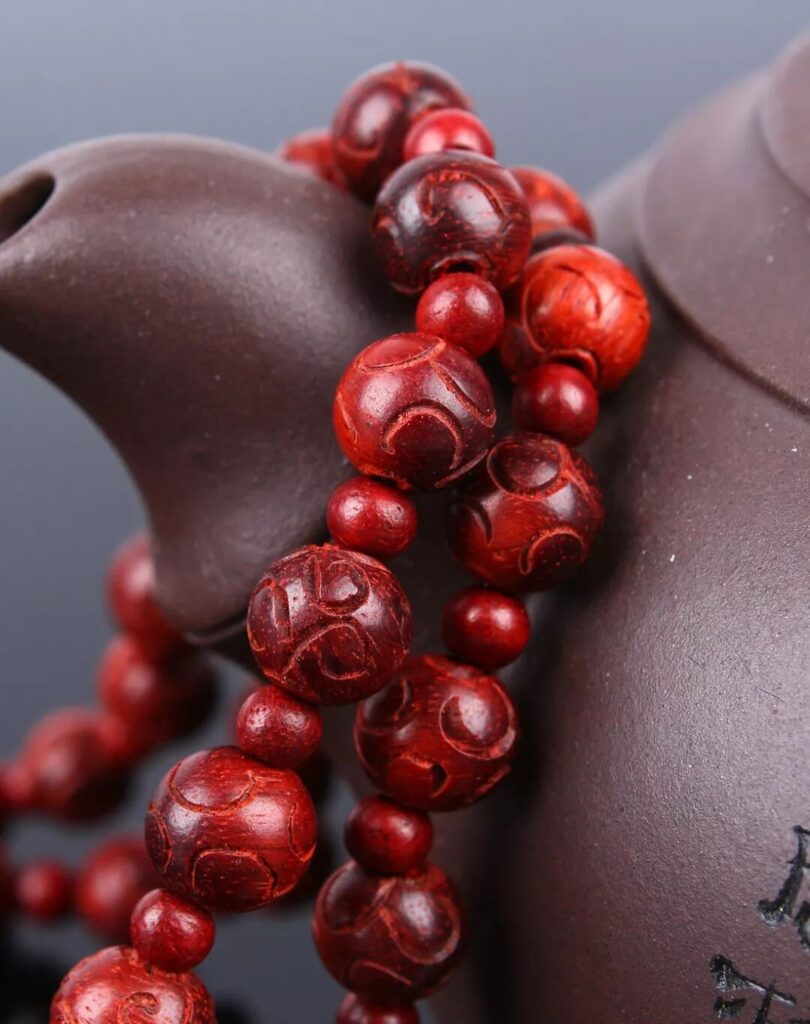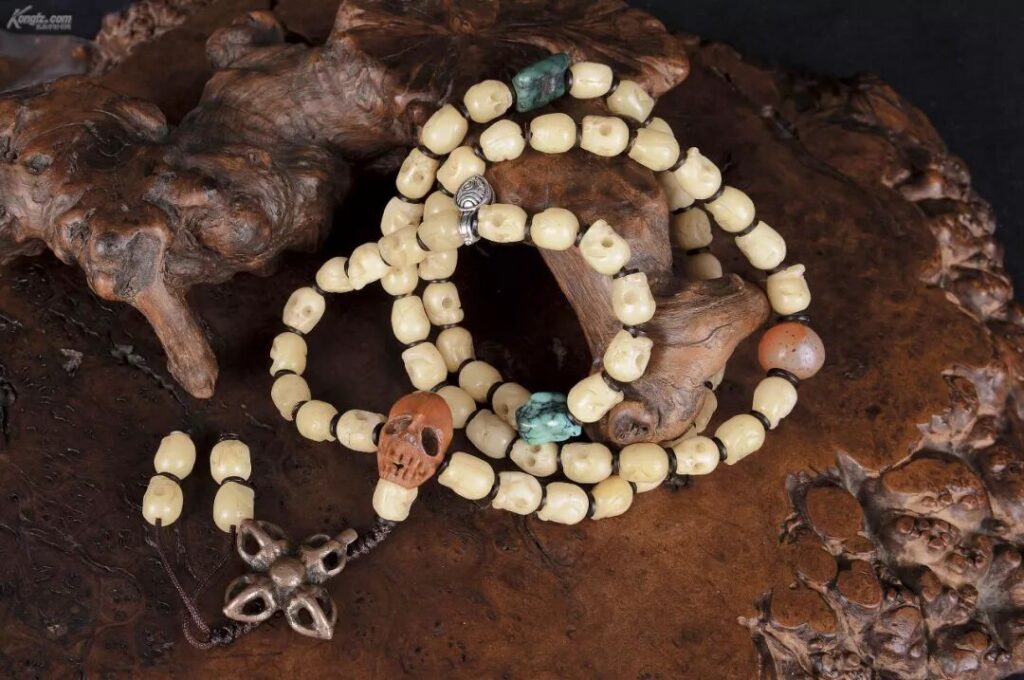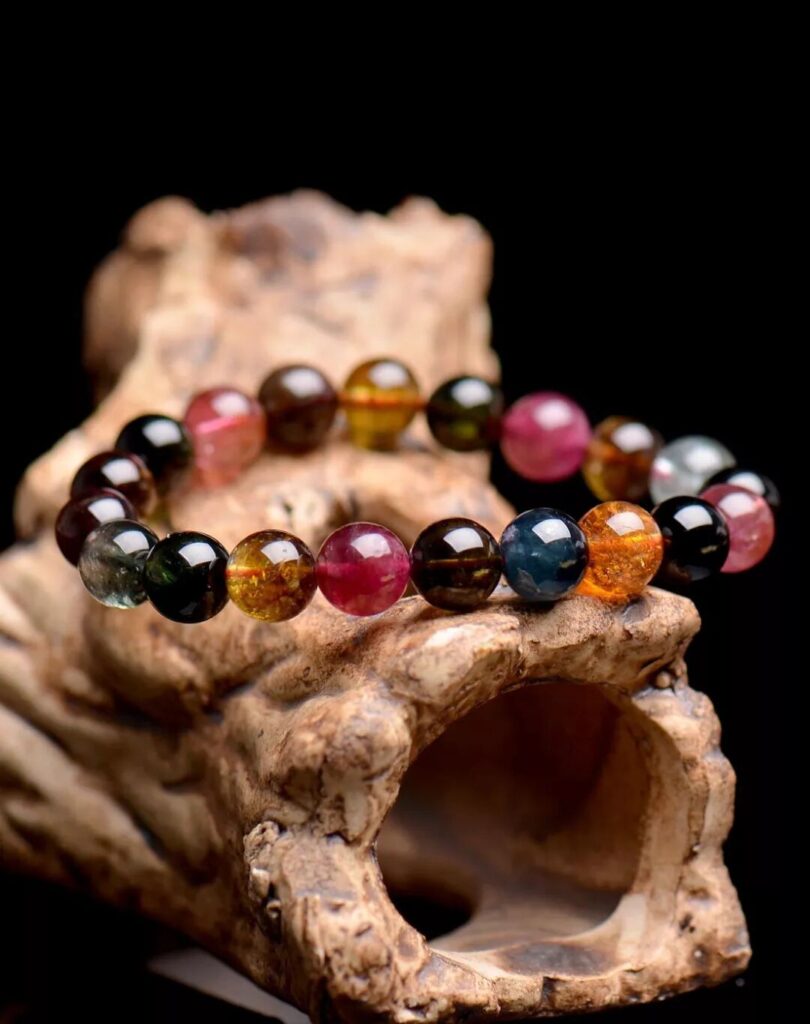To most people, a bracelet is just a string of small beads—so why distinguish between men and women? In truth, the gender distinction for bracelets is inextricably linked to the wearer’s physical constitution of yin and yang!
Yin-Yang Harmony
Daoist philosophy holds that all things in heaven and earth possess yin and yang qualities, particularly men and women. Their inherent physical differences determine that men belong to yang, while women belong to yin.

Excessive yang leads to overflow, while excessive yin harms the body. Women, being yin-dominant, must nourish yin while also appropriately supplementing yang energy to achieve balance. Men require the opposite.

As part of the natural order, bracelets must also maintain yin-yang equilibrium when in contact with the human body. For instance, certain bracelets are suitable for men but must be avoided by women, as wearing them would disrupt this balance.

Size Distinction
Though bracelets appear uniformly strung with beads, their varying diameters subtly dictate gender suitability.
Men typically possess thicker wrists and larger bone structures, making larger-diameter beads more fitting and better at accentuating masculine charm.

Women’s wrists are relatively slender, making smaller-diameter beads more suitable for bracelets, which also convey a gentle, graceful beauty. If a man wears a women’s bracelet, it may appear effeminate; similarly, a woman wearing a men’s bracelet lacks harmony.

Design Complexity
Beyond bead size, bracelet designs offer numerous choices: single-loop, multi-loop, carved, plain, and more.
For men, a simple, clean, uniformly colored bracelet without flashy decorations best conveys a sense of calm and restraint.
For women, the more beautiful the bracelet, the better~ Preferably one with a pendant, which highlights the unique refinement of femininity.

How to Choose Yin-Yang Bracelets
Now that we understand why bracelets are gender-specific, how should we select them?
Convex is Yang, Concave is Yin
Beyond plain round beads, modern bracelets often feature carved designs that maintain the basic spherical shape while adding intricate forms.
Depending on the carving technique, beads can be convex or concave. Generally, convex surfaces represent Yang, while concave surfaces represent Yin.
Additionally, the subject matter influences the yin-yang classification. Figures like Guan Yu, Zhong Kui, fierce beasts, and other fierce imagery belong to the yang category. Men wearing these can enhance their masculine energy. Women rarely wear these unless they have a delicate constitution needing yang energy supplementation.

Conversely, figures like Guanyin, Maitreya, animals, flowers, and plants—gentle-looking imagery—belong to the yin category. Women wearing these can nourish yin energy and protect themselves. Similarly, men with overly fierce temperaments or excessive internal heat can wear yin-oriented beads to harmonize and balance their energy.

Angular shapes are yang; rounded shapes are yin
Beyond common round beads, bracelets feature various forms like melon beads, faceted beads, and barrel beads.
Generally, angular and sharp shapes are yang, while smooth and rounded shapes are yin.

Sun-facing is yang; shade-facing is yin
Bead materials vary widely—wood, crystal, jade, etc.—and their yin-yang classifications differ significantly.
Wooden beads are often recommended for men because wood, nurtured by sunlight, embodies yang energy. When worn by men, it harmonizes their aura, potentially boosting career fortune.

Take the traditional four major yang woods: peach wood, small-leaf rosewood, golden thread nanmu, and agarwood. When worn by masculine men, they can ward off evil spirits, avert misfortune, and enhance career and financial luck.

Materials typically excavated from earth or water—such as jade, amber, nanhong, and pearls—belong to the yin category and are more suitable for women.
Women wearing these materials gain unique benefits like beautifying the complexion, nourishing yin energy, and replenishing blood, while also projecting an elegant aura.

Additionally, one type of bead material is yin in nature, but both men and women should exercise caution when wearing it: animal products. These beads carry heavy blood energy and are considered extremely yin. Wearing them excessively or for prolonged periods may attract negative influences, so it’s best to avoid them altogether!

Odd numbers are yang, even numbers are yin
After selecting the style and material, only one factor determines the yin-yang nature of the bracelet: the quantity, such as the number of beads or the number of loops.

Generally, odd numbers represent yang, while even numbers represent yin. Regarding single or double loops, men are well-suited for single-loop bracelets—simple and straightforward, radiating yang energy. Women, on the other hand, are suited for double-loop bracelets—the double encirclement of the wrist embodies softness, elegance, and grace.

Regarding bead count:
Odd numbers often carry a sense of strength, aiding career success and helping one rise from adversity—like 21 beads.
Even numbers typically symbolize blessings and protection, helping dispel worries, simplify complexities, and turn major issues into minor ones—like 108 or 36 beads.
In summary, determining whether a bead bracelet is yin or yang requires a comprehensive evaluation of the four points mentioned above—it cannot be based on just one aspect. Of course, it is not necessary for all four points to align perfectly to establish its yin or yang nature. As long as the majority of the beads’ shape, material, number, and number of strands align with either yin or yang characteristics, its inherent property can be concluded.